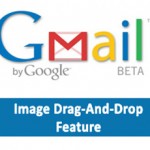 New York — Microsoft, pursuing the corporate customer, officially unleashed its cash cow Office 2010 and SharePoint 2010 suite at an event Wednesday at Rockefeller Center, and also trotted out its local star launch customer in the form of the NSW Department of Education and Training. The latest update to the software adds new features to the desktop applications like Word, Excel, Outlook, and PowerPoint.
New York — Microsoft, pursuing the corporate customer, officially unleashed its cash cow Office 2010 and SharePoint 2010 suite at an event Wednesday at Rockefeller Center, and also trotted out its local star launch customer in the form of the NSW Department of Education and Training. The latest update to the software adds new features to the desktop applications like Word, Excel, Outlook, and PowerPoint.
Office has customarily been a very powerful performer for Microsoft’s bottom line. The products that rides around the suite accounted for more than half of the software giant’s operating profits during its last fiscal year.
But the competition keeps boiling up for Microsoft’s productivity suite both from freeware outfits such as OpenOffice and increasingly Google which wants to snatch Microsoft’s large customer base and shift them into the cloud with online delivered productivity and collaboration apps.
In a statement issued with the release, which also contained Visio 2010 and Project 2010, business division President Stephen Elop said “Office 2010 and SharePoint 2010 will define the future of productivity.” Outlook features e-mail management and PowerPoint can broadcast to browsers. Office 2010 features online components.

Stephen Elop, Microsoft Business Division president, unveils Office 2010 in New York City on Wednesday, offering a glimpse at some of the functionality the updated software suite has to offer. (Credit: Marguerite Reardon/CNET)
Both the Microsoft’s products became available worldwide to businesses on Wednesday, proclaiming a ROI of 300 percent. By the end of the day, many customers already appreciated the software’s new features, as companies continue their climb out of a deep recession.
Elop, speaking to the Wall St Journal, said he is surefooted that Microsoft’s latest offerings are more appealing to businesses than Google’s.
“They are making a lot of buzz out there as it concerns their point of view, but when you look at the data and speak to customers, there is no question Microsoft is gaining the customers,” Elop said.
He further added that around 8.6 million people are already utilizing Office 2010 and its associated products as part of Microsoft’s biggest-ever testing program.
While announcing the product, the company spotlighted a survey made by Forrester Consulting that it commissioned. Employing a model that focused on costs, benefits to an entire organization, flexibility and risk.
According to the study: A Dutch telecommunications executive quoted as saying that the presentations pacakage under the test version of the new PowerPoint saved her time. And an Australian education official said OneNote was a killer app for engaging students. A technology director talked up the ability to get Facebook and LinkedIn status updates directly in Outlook.
“The 2010 range of applications represents an epic release for all of you,” said Elop at the launch event in NBC’s “Saturday Night Live” studio. “We deliver the best productivity experience across the PC, browser and phone.”
In addition to the corporate version of the product, Microsoft is also doling out some goodies away for free to consumers, who will gain a new level of access to its Office and Sharepoint products. Moreover, it is also handing out mobile access to the new suite of Microsoft Office products.
The complementary online version of the software will allow consumers, students, and corporate customers trying to access these applications from a home computer to access the programs and files from anywhere using a Web browser and an Internet connection. This new free version of software will be available starting June 15.
During the keynote, Chris Capossela, senior vice president of Microsoft’s Information Worker Product Management Group, demonstrated how photos and video can be modified within Word and PowerPoint. He also showed how PowerPoint slides can be broadcast and people using the Web and mobile version of the application can view the slideshow anywhere they can get access to the Internet.
Microsoft’s attempt to put some Office functionality into the “cloud” and offer it to consumers for gratis is a clear nod to competitor Google, which has been offering things like Google Docs for free for years. But unlike Google, Microsoft is not looking to make money by selling advertising to consumers.
“You can employ the Web version of office to do basic things like share documents and edit them,” said Capossela. “But if you are a student, you are still probably going to want the rich client version to write a paper. You would not want to do all of that in the browser.”
Capossela continued that he believes that if consumers are given a taste of some of the new capabilities in Office 2010, they would surely wish to have the full version. “People will unquestionably pay for value,” he said. “The free version is a great thing to have available when you want to work on a document from home or you want to share it with someone.”
Microsoft has lately been boosting up its profile as a cloud player and; The Redmond, Wash.-based software giant said it anticipates around 90 million businesses to deploy the latest edition of its suite of applications, which contains the company’s crown jewels of Word, Excel and PowerPoint.
Office 2010 goes on sale today for business customers while consumers will have to wait until June 15. There are no upgrade prices for existing users. Office 2010 Home & Student is $209 and the Home & Business version which adds Outlook is $379. The Professional version which adds Publisher and Access costs $849.
“It is not a cost center; it is a business driver,” said KPN strategist Wolfje Van Dijk, because better software will make workers more productive and vital.
Van Dijk said she is sensing “Office envy” from people who have seen her laptop running the test version of Office 2010.
“People see … a presentation I have done in 40 to 50 percent of the time they have taken to build a presentation that looks awful, that looks like Web 1.0. They say, ‘I want that.’ “
Microsoft has also introduced a new way for people to buy Office, dubbed the Product Key Card, which lets users unlock Office software that has been pre-loaded on to new PCs. Australian Key Card prices are: Home & Student $169, Home & Business $269 and Professional $449.


